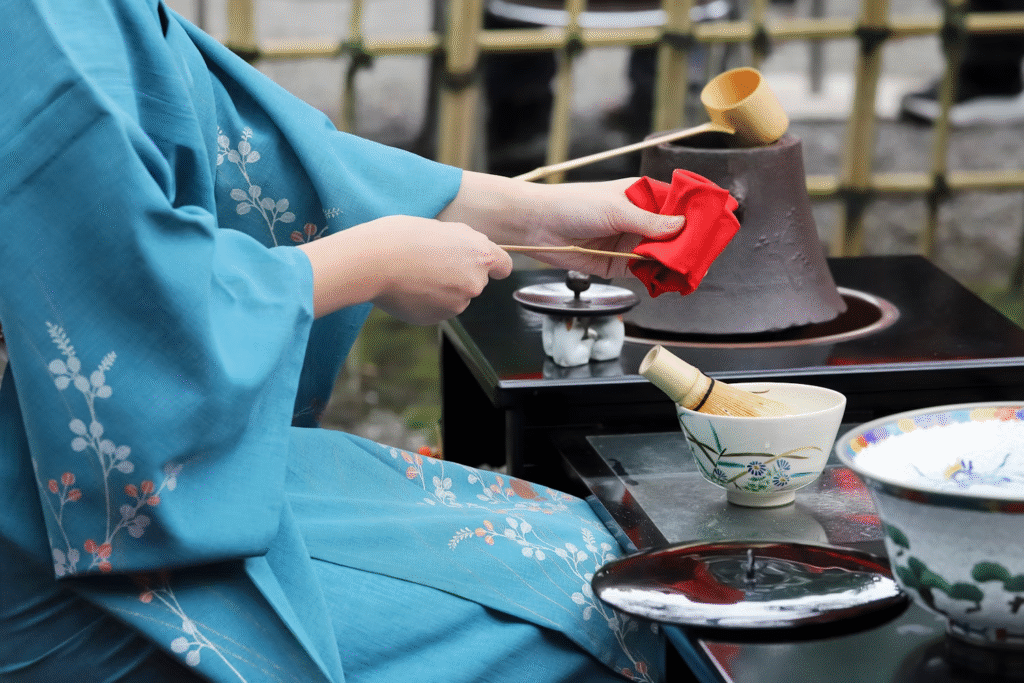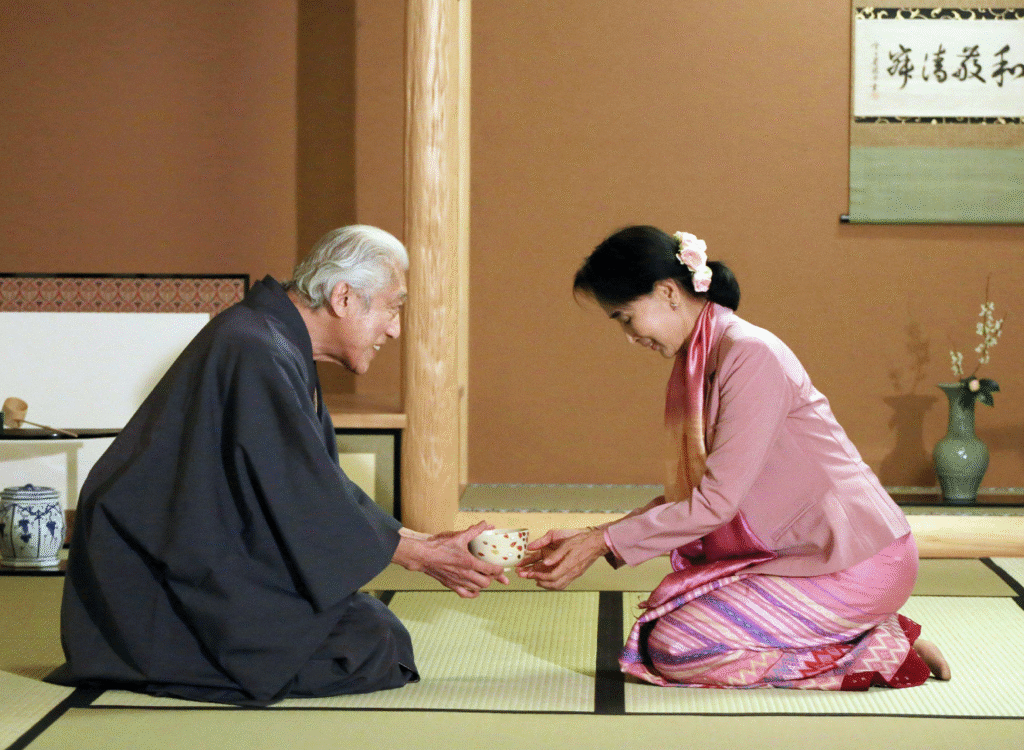
The Japanese Tea Ceremony (茶道, sadō or chanoyu) is one of Japan’s most treasured cultural traditions. For many visitors, joining a tea ceremony is not just about drinking matcha—it’s about stepping into a world of mindfulness, elegance, and history. If you’re new to Japan or curious about its rituals, this beginner’s guide will help you understand what to expect and how to fully enjoy the experience.
What Is the Japanese Tea Ceremony? 🌸

The Japanese Tea Ceremony is a ritualized way of preparing and serving powdered green tea (matcha). Rooted in Zen Buddhism, it’s a practice that emphasizes:
- Harmony (wa) – balance between people and nature.
- Respect (kei) – showing gratitude to the host, guests, and tools.
- Purity (sei) – cleansing of body, spirit, and surroundings.
- Tranquility (jaku) – finding peace in the present moment.
Every movement, from whisking the tea to bowing, is performed with intention. Unlike casual tea drinking, this ceremony is a mindful journey that can last from 30 minutes to several hours.
Essential Tools of the Ceremony ✅

To appreciate the ritual, it helps to know the main items used:
- 🍵 Chawan (茶碗): The tea bowl, often handmade and seasonally chosen.
- 🥢 Chashaku (茶杓): A bamboo scoop for measuring matcha.
- 🌀 Chasen (茶筅): A bamboo whisk used to froth the tea.
- 🍬 Wagashi (和菓子): Traditional Japanese sweets served before the tea.
These tools are not just utensils—they are works of art, carefully selected by the host.
What to Expect as a Guest ✨

If you join a Japanese Tea Ceremony for the first time, here’s how it usually unfolds:
- Arrival: Guests remove shoes and may wash hands to symbolize purification.
- Seating: You’ll sit on tatami mats in a tea room or tea house. Don’t worry if you’re unfamiliar—hosts guide beginners warmly.
- Wagashi First: A seasonal sweet is served before tea to balance flavors.
- Tea Preparation: The host prepares the matcha carefully, explaining steps when needed.
- Drinking the Tea: Hold the bowl with both hands, bow slightly, rotate it before sipping, and savor each taste.
Tip: Don’t stress about making mistakes. Hosts expect beginners to be unfamiliar with the customs.
Where to Experience a Japanese Tea Ceremony in Japan 🗾
Many places across Japan offer beginner-friendly tea ceremonies:
- Kyoto: The cultural heart of tea. Try Camellia Tea Ceremony near Kiyomizu-dera Temple, or join sessions at Urasenke’s tea houses.
- Tokyo: At Hamarikyu Gardens, you can enjoy matcha while overlooking a traditional garden.
- Kanazawa: Gyokusen-en Garden offers authentic ceremonies in a serene setting.
- Nara: Some tea houses near Todai-ji Temple let you pair the ritual with exploring Japan’s first capital.
Tips for First-Timers 📝
✅ Wear modest clothing, preferably with socks (since shoes are removed).
✅ Stay quiet and observe, as silence is part of the experience.
✅ Avoid pointing your feet directly at the host or utensils.
✅ Be present—focus on the beauty of each movement.
Why You Should Experience It 💡
The Japanese Tea Ceremony is more than a tourist activity—it’s a window into Japan’s soul. By slowing down, appreciating details, and connecting with tradition, you’ll walk away with a deeper respect for Japanese culture.
Whether you’re in Kyoto, Tokyo, or a smaller town, taking part in a tea ceremony is an unforgettable memory that blends history, hospitality, and mindfulness.
Discover more from Japan Insider Guide
Subscribe to get the latest posts sent to your email.
